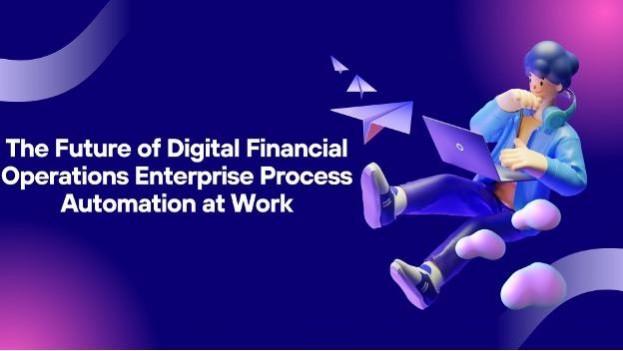
The rapid evolution of digital financial operations has been fundamentally reshaped by Enterprise Process Automation (EPA). Vaishnav Yerram explores how businesses are leveraging cloud-based automation to streamline financial processes and improve efficiency. Technology-driven change is enabling organizations to cut expenses and make smarter decisions by implementing creative approaches to automation.
Smarter Workflows, Faster Processing
EPA is transforming financial workflows by minimizing manual intervention and improving accuracy. By integrating automation with artificial intelligence (AI) and machine learning (ML), organizations are witnessing substantial gains in efficiency. Studies indicate that companies implementing EPA have reduced processing time by up to 80%, leading to improved business outcomes and significantly reducing operational costs across multiple organizational departments.
Addressing Digital Transformation Challenges
Despite the advantages of automation, many organizations face hurdles in their digital transformation journey. System integration and data management complexities often slow down adoption. Research shows that 65% of organizations struggle with system interoperability, while 72% cite legacy systems as their primary obstacle. Overcoming these barriers requires strategic investments in scalable automation frameworks.
The Shift to Cloud-Based Financial Data Management
Cloud-based financial data centralization is proving to be a game-changer, with companies reporting a 40% improvement in data accessibility. By adopting cloud solutions, organizations are reducing manual errors, expediting month-end financial closing, and achieving a 30% reduction in operational costs. Real-time data synchronization further enhances transparency and decision-making capabilities, enabling sustainable growth and scalability.
Strengthening Security in Automated Financial Systems
As digital operations expand, securing financial data becomes paramount. Organizations implementing robust security frameworks experience 60% fewer security incidents. Modern security strategies include encryption, AI-driven threat detection, and automated compliance monitoring. Role-Based Access Control (RBAC) has also improved security by limiting unauthorized access and enhancing operational efficiency.
Breaking Down Departmental Silos with Seamless Integration
A major advantage of EPA is its ability to foster cross-departmental integration. Businesses adopting automation report a 50% reduction in workflow bottlenecks and improved collaboration across departments. API-driven communication and event-based architectures ensure real-time data flow, eliminating redundancies and increasing process agility, while enhancing data security and compliance through standardized protocols and enabling seamless scalability for future organizational growth requirements.
AI and ML: The Next Frontier in Financial Automation
Artificial intelligence is redefining financial operations, with AI-driven analytics improving market predictions by 40% and reducing reconciliation efforts by 75%. NLP-powered document processing is also enhancing financial data extraction with over 90% accuracy. These technologies not only optimize operations but also enhance fraud detection by identifying anomalies with a 95% success rate.
Strategic Implementation and ROI Considerations
A structured approach to EPA implementation significantly improves success rates. Organizations following a phase-wise deployment strategy experience 65% fewer disruptions. ROI analysis shows that companies utilizing AI-driven automation achieve 35% more accurate cost projections and 50% better alignment between expected and actual benefits. Additionally, robust error-reduction frameworks have decreased deployment issues by 75%.
Looking Ahead: The Future of Enterprise Automation
As data processing demands grow, scalable automation systems are becoming essential. Emerging technologies like quantum computing and edge AI are set to revolutionize enterprise automation, enabling real-time decision-making at unprecedented speeds. Organizations embracing flexible, innovation-driven automation strategies will maintain a competitive edge in the evolving digital landscape while maximizing operational efficiency.
In conclusion,Enterprise Process Automation is at the forefront of digital financial transformation, offering enhanced efficiency, security, and scalability. As businesses continue their automation journey, strategic planning and emerging technology integration will be key to success. Vaishnav Yerram's insights into EPA underscore the importance of adapting to digital advancements while maintaining robust security and compliance measures. With automation driving the future of finance, organizations must embrace innovation to thrive in an increasingly digital world.

















